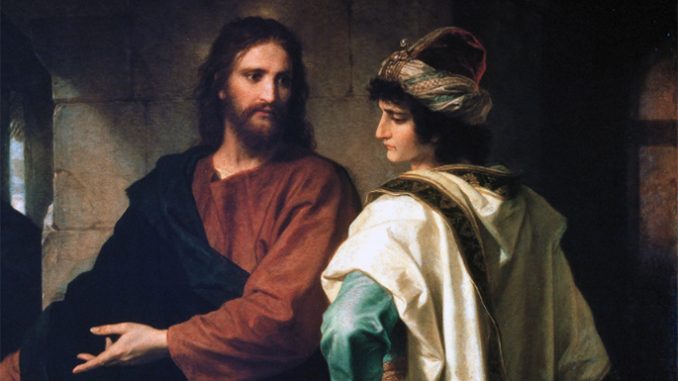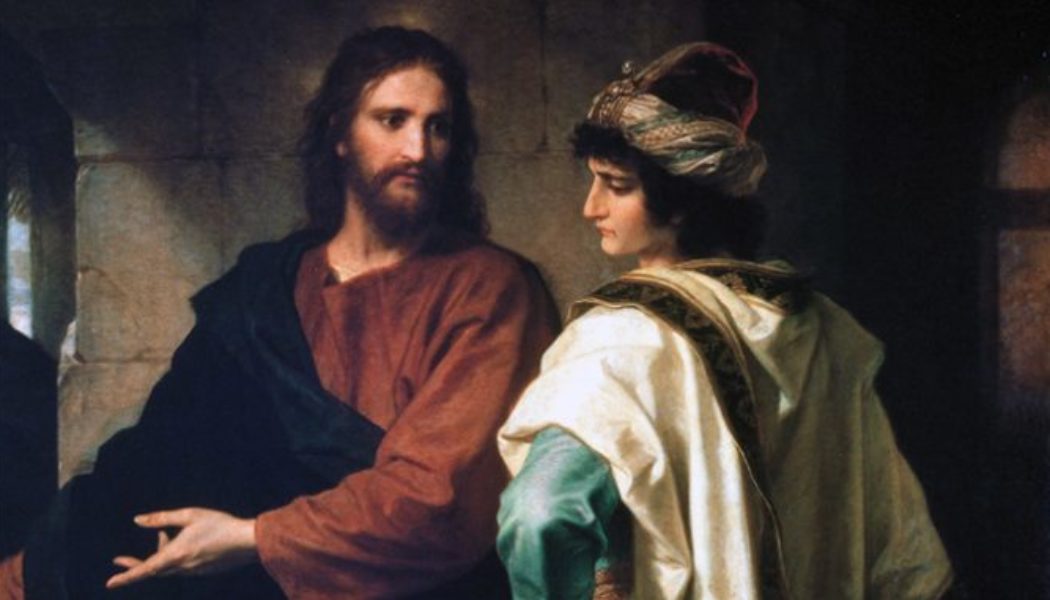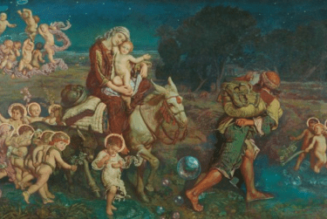
Having reviewed the republication of Henri de Lubac’s book The Church: Paradox and Mystery, I had to accept that space constraints prevented me from discussing at more length a part of the text that moved me greatly. And that was de Lubac’s insistence that the only real reform of the Church happens when God raises up saints appropriate to the age. De Lubac then noted that it is impossible to guess in advance what kinds of saints the Holy Spirit will raise up in our own time. Nevertheless, de Lubac said that there are some things we can definitively say about what a saint is and is not, which will be applicable in every age.
What follows is my attempt to do his insights justice, with an eye on our own situation today.
For starters, a saint is not a “religious genius” who is the center of a kind of Montanist “creativity” that seeks to “surpass the Gospel” through innovative new constructions that mirror the slogans of today and which denigrate all that came before as mere preparations for a new age of enlightenment. And, as de Lubac says, “If they accomplish great things, it will not be by dissertations on the courage to dare.” (174). It is not hard to see in these words a thinly veiled mockery of all the current claptrap that declares that “God is doing a new thing” when in reality what is being proposed is nothing new at all, but just garden variety debauchery dressed up as “enlightened living”.
Let us be blunt here: in both de Lubac’s day and our own, there is the pretentious spectacle of the progressive Catholic theologian or religious who dissents publicly from settled Church teachings on any number of hot-button issues, and who are held up as “heroes” who have the daring and “courage” to stand up to the “backward” Church. This is de Lubac making it clear that there is nothing Christ-like, or courageous, or cruciform and sanctified about winning the praise of the world by parroting the nostrums of the current Zeitgeist and wielding them against the Church. Cultural quislings are not saints and the Church has enough of these already, thank you very much.
Likewise, this kind of pseudo-courage is also to be found among certain kinds of traditionalists who, as de Lubac puts it, “yield to an infantile need for security by attaching themselves to the Church’s tradition” in ways that are not truly faithful to it but instead use it as an idolatrous construct of their own imaginings. The saint of today must never yield to the sectarian temptation to run off to some kind of tradition-compound with its own underground liturgies and “hero priests”, who are falsely portrayed as martyrs to the cause.
For example, I have been critical of Pope Francis for having re-empowered those in the Church who seek a revolution in the Church’s moral theology. I have also been critical of the pastoral approach of Traditionis Custodes. But we simply cannot allow a putatively bad pastoral decision by the pope on the matter of allowable liturgical rites to drive us into madness. Our faith is in Christ and His Church, and not in a particular form of the liturgy. And when a particular form of the liturgy is held up as being somehow above the magisterium of the Church, then we need to call it for what it is: a retrograde ecclesial ideology that borders on idolatry.
Traditionalism, therefore, is not indicative of any path to sanctity that I can identify beyond the fact that any good liturgy can produce saints when it is a liturgy enlivened by a deep communal faith life within a vibrant parish.
The true courage of an authentic sanctity walks in the way of the Cross. De Lubac borrows an analogy from some Church Fathers who likened the sanctity of the Church to the luminosity of the moon, whose brightness simply mirrors the glory of the Sun’s radiant light. But, at times, the moon’s brightness wanes and can even become totally eclipsed. So too with the Church, which goes through entire periods of darkness before the light of Christ once again returns via the reforming zeal of the saints. “At certain times,” he notes, “her witness may be much obscured … but we have the assurance that ‘saints will always spring up.’” (30) However, de Lubac laments, “… in this century the Church is a Church in the throes of death and that it is in this way that she is renewed, by drawing ever closer to Christ, her Spouse. She then becomes so identified with him that she disappears, as it were, in his brilliance. So close to her Sun, the crucified Lord, it is in the obscurity of the Passion that she begins to grow again.” (30-31)
In other words, the Church of today is undergoing a purgative via crucis of unprecedented dimensions and therefore the current crisis is not something we should shrink from in fear but rather something we should embrace as an opportunity for new saints to rise up. And this pursuit of sanctity, no matter how fitful and inconsistent and frustrating, is going to have to involve every one of us, or at least most of us. In a liberal, latitudinarian, democratic and—let’s face it—Church-wary culture, the laity must lead the way this time around. Now is the time of the laity, its critical moment, its “Ernstfall”, and therefore the kind of saints the Church most needs today are lay saints active in the world.
That sounds cliché, but it isn’t. It is the essence of the Gospel and if we tire of hearing that we are all called to holiness, and if at all just seems so “meh” and “whatever”, then it is time to acknowledge that acedia has captured the Church of today and rendered the Gospel itself boring, if not otiose.
Now is not the time to bless the latent nihilism at the heart of our agonistic culture of Dionysian emptiness and despair, but to challenge it by entering it as active players who do not succumb to it. Now is the time to “suffer through” the microcosmic hell of our contemporary anomic sadness with a vicarious and intercessory empathy. And in so doing, to conquer it and in the process give public witness to the presence of the supernatural and eschatological mystery that makes our resistance to cultural assimilation possible—and which alone can make us “interesting” as a fascinating and tremendous provocation.
Therefore, what we most especially do not need today is the “Low-Bar Thomism” of the current crop of revisionist moral theologians who reduce the call to holiness to the provenance of the few, which simply returns us to a more elitist past. Such theologians portray the path to holiness for “most ordinary people” as a profound struggle to even live up to the basic commands of the moral law, and for whom we must make all kinds of “pastoral allowances” as we “accompany” them in their “path of discernment.” This all sounds rather good and deeply caring, but in reality it is a word salad of meaningless buzzwords, all of which are designed to promote a simple idea: holiness is not for ordinary people. Which is to say, sanctity is not for ordinary people and the emphasis upon “becoming a saint” is more than likely a pietistical fantasy if not a kind of retrograde scrupulosity which is riddled with the Manichean overtones of a repressed sexuality.
I think of the story of the rich young “ruler” in the Gospels who asked Jesus, “What must I do to inherit eternal life?” (Lk 18:18). And Jesus then intimates that for this man it is not enough to just follow the bare minimalism of living the moral commandments—he must go beyond this and, “give all you have to the poor and then follow me.” But the young man became very sad and refused the offer to follow Christ because he was too attached to his wealth. Jesus then said to the young man (and as Luke adds, while “looking at him”), that it is extremely hard for a wealthy person to enter the Kingdom of God. In fact, Jesus says it is easier for a camel to pass through the eye of a needle than for the rich to find eternal life. It is a brutal scene that most American Christians overly spiritualize because it cuts too close to our affluent bones.
But notice what Jesus did not say or do. He did not say to the young man, “Hey dude, it is okay. Don’t worry. Chill. Just do the best you can in the complex circumstances of your life, give to God what you most generously can at the present moment within the confines of those circumstances, and God will accept it. And you can have a certain peaceful conscience about it all.” If Jesus had said such a thing, it would have been a condescending “low-bar” kindness with avuncular indulgences to the folly of youth, rather than a bracing expression of the Dominical goodness. And notice too that Jesus did not chase after the young man in order to remonstrate with him further. He allowed him to walk away after bluntly telling him to his face that his wealth was going to be his spiritual undoing.
This is also the only instance in the Gospels where Jesus specifically calls someone to follow him and they refuse. And what is interesting to me, since it is often ignored, is that the distinction between commandments and counsels—so important to the later Church of clericalized holiness—is virtually non-existent in this narrative. Jesus ties this man’s salvation very directly to the call to pursue a path to holiness that goes beyond the living out of the moral commandments. And that is because, if we read this narrative in the light of the Sermon on the Mount, Jesus is saying that if you properly understood what it is the commandments demand of us in a maximal and non-minimal way, then you would understand that their very inner logic demands, for their deepest fulfillment, the leap into the pursuit of a higher holiness.
Indeed, he is insisting that a minimalist living out of the commandments, devoid of an inner conversion of the heart, is actually not a true living out of the commandments at all.
There is a place, of course, for kindness, patience, discernment, and accompaniment. But those virtues are moments within the broader economy of moral and spiritual goodness and not a substitute for it. Truth and mercy cannot be at odds, and to portray them as such smacks of the discredited “Law-Gospel” dialectic that has not a little Marcionism within it. Christ set the bar high, but he then also commanded us to forgive seventy times seven and to extend mercy with a wild profligacy even to our enemies.
We cannot make Christ credible again and we cannot break the chains of the hegemony of the “immanent frame” that enslaves us if we turn every hard choice we face—choices demanded by the Gospel—into a “gray area” of “complex circumstances” crying out for a lowered bar of expectation. It is easy to be “inclusive” when you do not think anything at all is ever “exclusive.”
And we cannot make the supernatural glory of Christ present again if we offer a pinch of incense to the principalities and powers that have created all of those “complex circumstances” in the first place. The “inclusion” that Christ brings is an inclusion from above, not from below. It shatters the chains of our immanence by showing us that the only true worldliness is the world made new in Christ.
And so it is the joyful task of the modern quester after holiness to make clear and credible again the words of our Lord: “Behold, I make all things new.”
If you value the news and views Catholic World Report provides, please consider donating to support our efforts. Your contribution will help us continue to make CWR available to all readers worldwide for free, without a subscription. Thank you for your generosity!
Click here for more information on donating to CWR. Click here to sign up for our newsletter.
Join Our Telegram Group : Salvation & Prosperity









